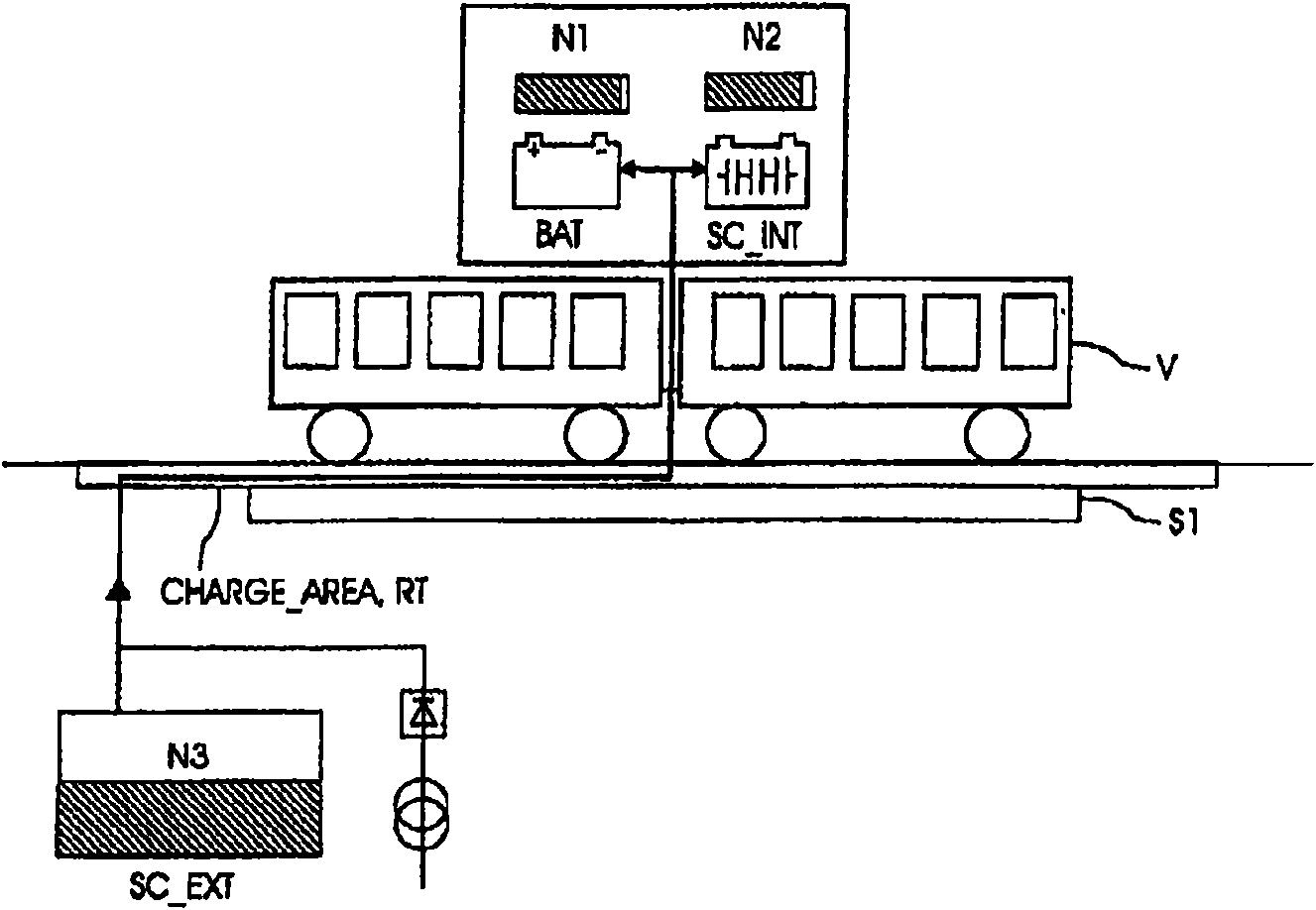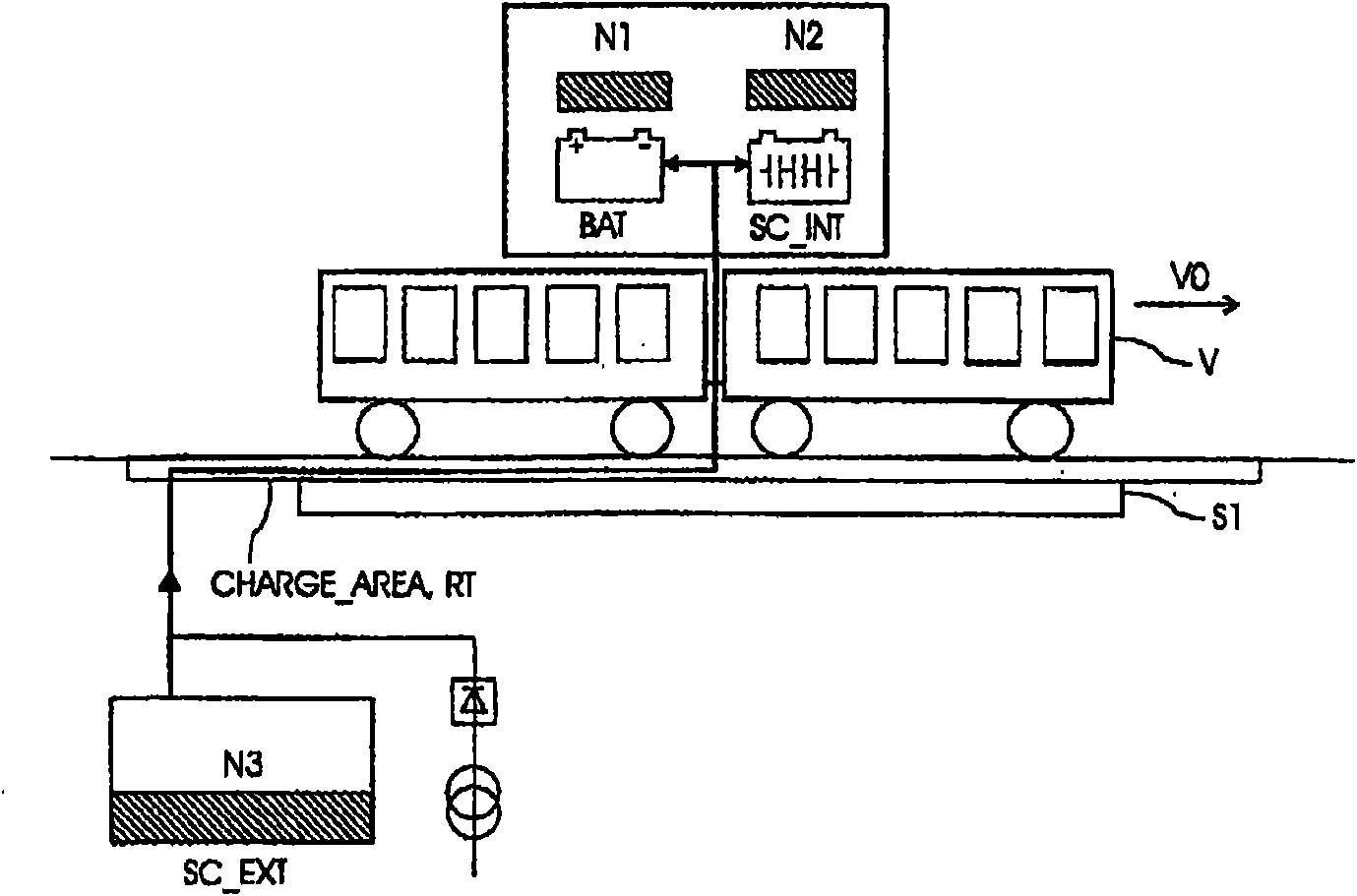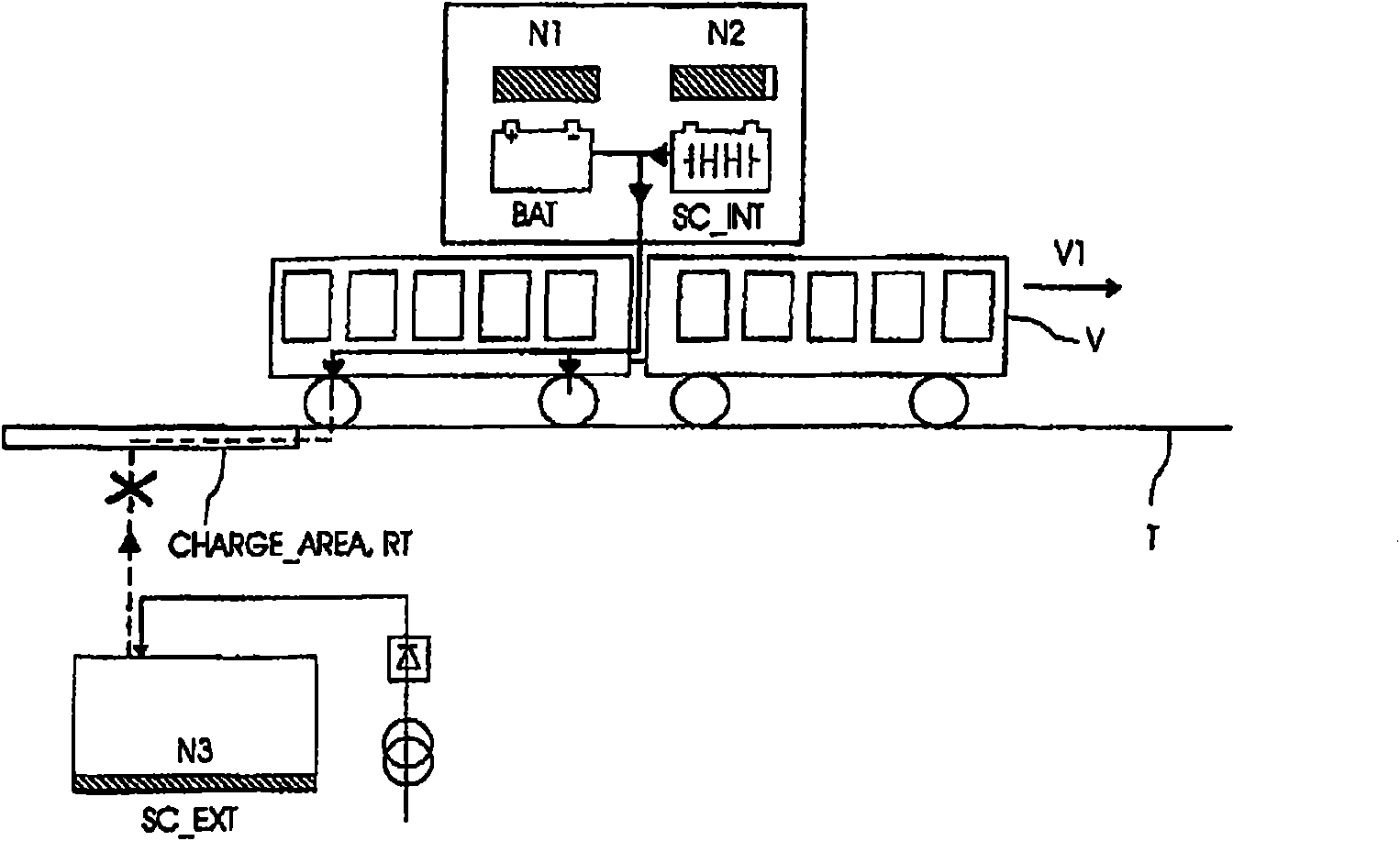Energy-regulating system for a vehicle
An energy management system and vehicle technology, applied in the field of energy management systems, can solve the problems of railway transportation installation complexity, accident risk, increased cost, etc., and achieve the effects of reduced energy loss, limited loss, and great flexibility
- Summary
- Abstract
- Description
- Claims
- Application Information
AI Technical Summary
Problems solved by technology
Method used
Image
Examples
Embodiment Construction
[0046] Figures 1 to 6 shows an example of the energy management system described above, and the method of operation of the system for a vehicle V in a state such as figure 1 , 2 The starting station S1 is shown and as Figure 5 , 6 Operates on a predetermined route T between the indicated arrival stations S2. The stations S1 , S2 comprise eg passenger platforms (in the length direction of the stations S1 , S2 ), such as conventional stations for subways, trams, buses and the like. On board the vehicle is a high power electrical energy storage device, which is used to provide traction energy to the vehicle, here it is with charge level N2 (no hatching = lowest level; with hatching = higher level) supercapacitor SC_INT. In this example, a battery BAT with charge level N1 (contrary to supercapacitors, high energy per mass) is also loaded on the vehicle. Here the vehicle consists of two carriages, at least one of which is a tractor or pusher. Electrical contact is made bet...
PUM
 Login to View More
Login to View More Abstract
Description
Claims
Application Information
 Login to View More
Login to View More - R&D
- Intellectual Property
- Life Sciences
- Materials
- Tech Scout
- Unparalleled Data Quality
- Higher Quality Content
- 60% Fewer Hallucinations
Browse by: Latest US Patents, China's latest patents, Technical Efficacy Thesaurus, Application Domain, Technology Topic, Popular Technical Reports.
© 2025 PatSnap. All rights reserved.Legal|Privacy policy|Modern Slavery Act Transparency Statement|Sitemap|About US| Contact US: help@patsnap.com



